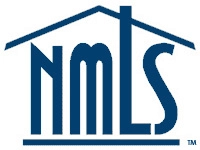A reverse mortgage is a type of loan available to homeowners who are typically 62 years of age or older. It allows them to convert a portion of their home equity into cash while retaining ownership of the home. Instead of making monthly mortgage payments to a lender, with a reverse mortgage, the lender makes payments to the homeowner.
Here are some key points to understand about reverse mortgages:
- Eligibility: To qualify for a reverse mortgage, the homeowner must be at least 62 years old and own a home that serves as their primary residence. The home should have sufficient equity to support the reverse mortgage loan.
- Loan Repayment: Unlike a traditional mortgage where borrowers make monthly payments to the lender, a reverse mortgage does not require immediate repayment. The loan is typically repaid when the homeowner sells the home, moves out of the property, or passes away. The repayment is usually made by selling the home, and the proceeds are used to repay the loan balance.
- Home Equity Conversion Mortgage (HECM): The most common type of reverse mortgage is the Home Equity Conversion Mortgage (HECM), which is insured by the Federal Housing Administration (FHA). HECMs provide certain protections for borrowers, including a non-recourse feature, which means that the borrower or their heirs will not owe more than the home's value when the loan becomes due.
- Loan Amount and Disbursement: The amount a homeowner can borrow with a reverse mortgage depends on factors such as the age of the borrower, the home's value, current interest rates, and the type of reverse mortgage chosen. The funds can be received as a lump sum, fixed monthly payments, a line of credit, or a combination of these options.
- Homeownership Responsibilities: While the homeowner retains ownership of the home, they are still responsible for paying property taxes, homeowners insurance, and maintaining the property. Failure to meet these obligations may result in defaulting on the reverse mortgage.
- Counseling and Education: Before obtaining a reverse mortgage, borrowers are required to undergo counseling with a HUD-approved housing counseling agency. This counseling session aims to provide information about the loan terms, costs, and potential alternatives to help borrowers make informed decisions.
- Repayment Options: If the borrower or their heirs decide to keep the home after the borrower's passing, they can repay the reverse mortgage through other means, such as refinancing, using personal funds, or obtaining a traditional mortgage loan.
It's essential to carefully consider the advantages, disadvantages, and potential long-term financial implications before applying for a reverse mortgage. Consulting with a HUD-approved reverse mortgage counselor or a financial advisor can help you evaluate your specific situation and determine if a reverse mortgage is the right option for you.
Reverse Mortgage Basics
✓ Primary Residence Only (Owner-Occupied 1 – 4 unit, Condominiums, PUD’s, and Manufactured Homes)
✓ Minimum Age = 62 (Youngest Borrower’s Age is used to determine benefit even if less than 62)
✓ Non-Borrowing Spouse (less than 62 years old) has protections (must meet qualifying attributes required by HUD to be an Eligible NBS)
✓ No Monthly (Principal & Interest) Mortgage Payment - #1 reason Seniors get a Reverse Mortgage
✓ Non-Recourse: The Borrower, nor their estate, ever owes more than the property is worth
✓ HUD Required Counseling
✓ Value of Property is called the Maximum Claim Amount
✓ The Loan Amount is called the Principal Limit (PL) and is based on Age, Value and Expected Rate
✓ Expected Rate determines Principal Limit (PL) and is currently based on 10 Year CMT Plus Margin and once loan closes, it is not used. The Interest Accrual Rate is called the Initial Rate and is currently based on the 1 Year CMT Plus the Margin
✓ On the Fixed Rate, the Note Rate serves as both the Expected Rate and the Interest Rate
✓ Borrower can get funds in one or a combination of 3 different ways on Adjustable HECM
✓ Benefits continue as long as one of the borrowers occupies the property as their Primary Residence















